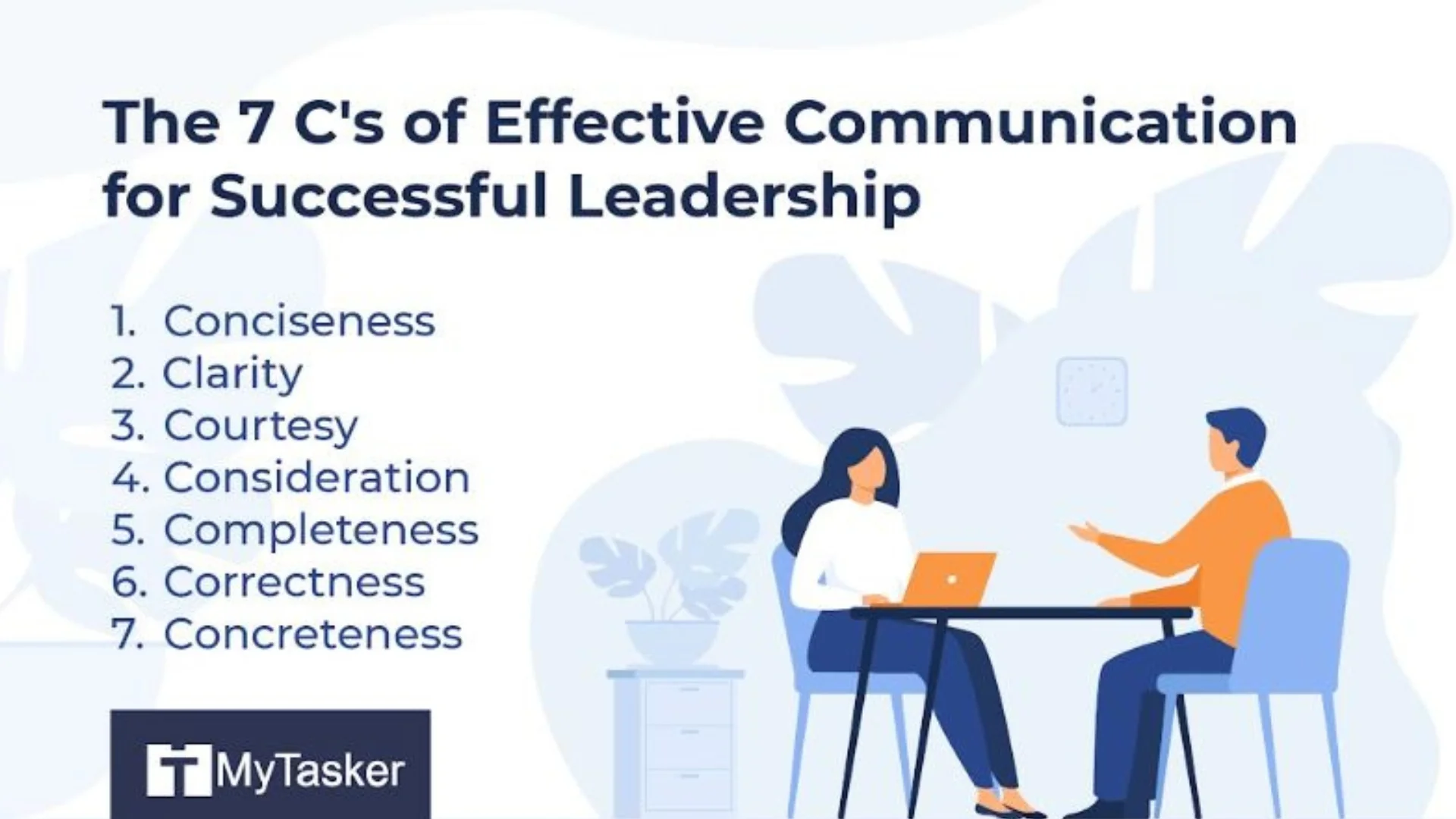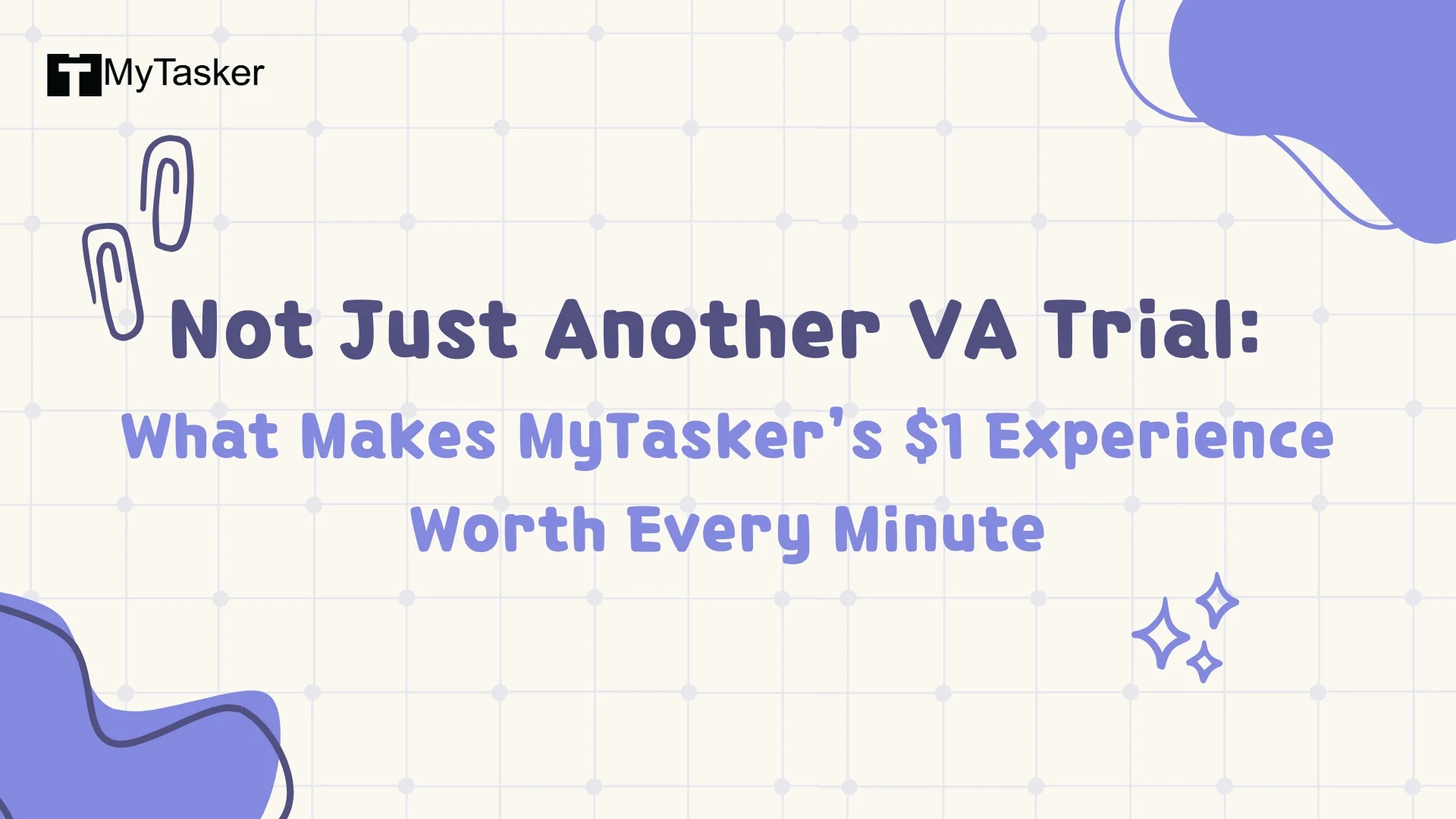The 7 Cs of communication are important for talking and writing clearly. Whether you are writing emails, giving presentations, leading webinars, creating reports, joining conference calls, pitching ideas to clients, or speaking to an audience, the C’s are key to success.
The 7 Cs help you share your message clearly. They help you show a clear picture, cut out the waffle, and present interesting facts simply.
Concise communication, in particular, involves getting straight to the point and avoiding unnecessary words, which is critical for maintaining audience engagement and preventing interest loss.
By using them, you can ensure that everyone understands what you want to say, improving and making your communication more effective!
What are the 7 Cs of communication?
-
Conciseness
-
Clarity
-
Courtesy
-
Consideration
-
Completeness
-
Correctness
-
Concreteness
Before exploring each point further and its importance, we must examine the significance of effective communication. A concrete message ensures clarity and factual accuracy, providing specific details while avoiding unnecessary length, which is crucial for enhancing productivity and fostering positive relationships among employees and clients.
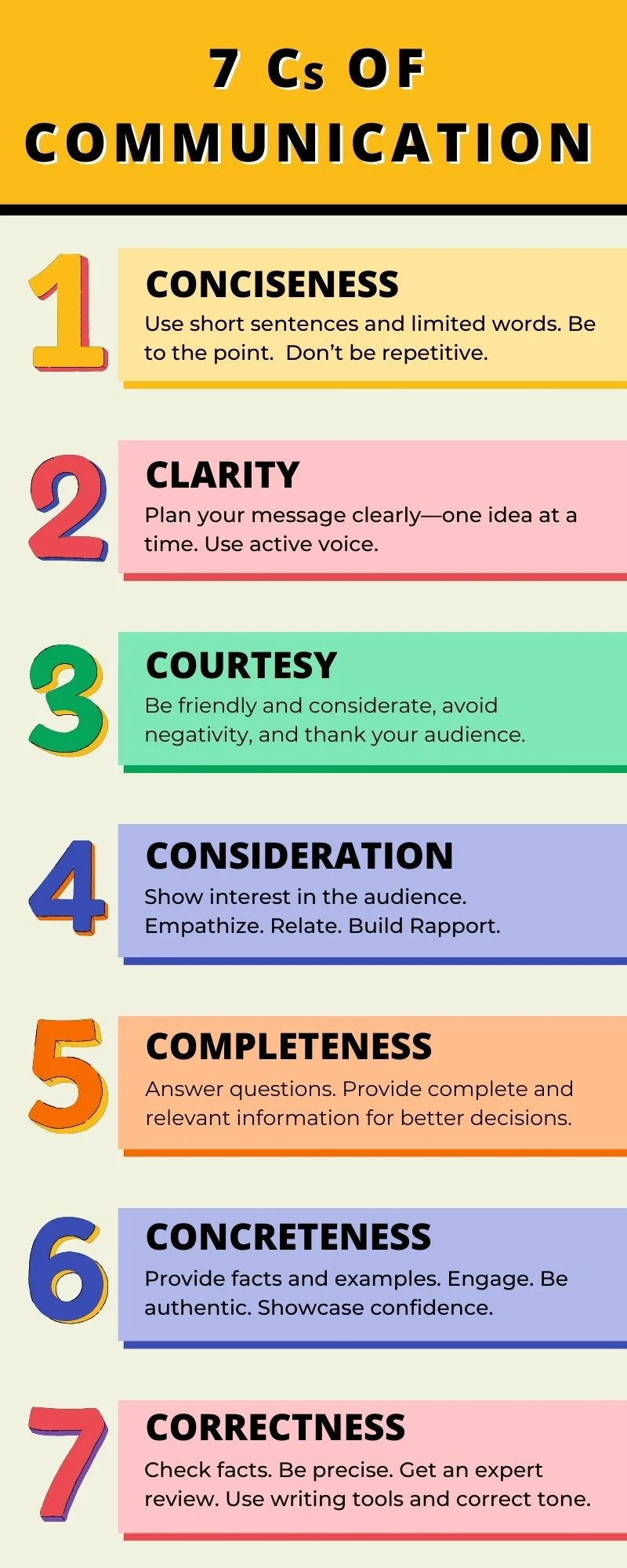
Understanding Effective Communication
Good communication skills are vital when it comes to working with colleagues or talking to potential clients. It helps us solve problems, work through differences, build strong relationships, and support each other. When people communicate well, businesses run better.
Benefits of the 7 C’s of communication with statistics
-
Productivity: Companies that communicate well are 25% more productive, which means they get more done!
-
Employee Engagement: When everyone is clear with each other, companies make 21% more money, and 41% fewer people call in sick.
-
Satisfaction: Did you know 68% of customers are willing to pay more for a better customer service experience? Effective communication is a big part of that.
-
Boost Customer Retention: Effective communication in excellent customer service boosts customer retention by up to 94%.
These stats show that when we communicate well, everyone works better, customers are happier, and businesses are more successful!
7cs of effective communication
Figuring out how to communicate effectively is easy for some, though it may not be so for others. Let us take a look at the 7 Cs with examples.
1. Conciseness in Communication
Conciseness means getting to the point in short sentences. This keeps your audience engaged and respects their time. When you deliver your message in a nutshell, especially in outreach emails, you show you value brevity and simplicity.
Tips:
-
Use Action Verbs: Choose strong verbs that say it all.
-
Cut the Fluff: Get rid of unnecessary words.
-
Highlight Core Points: Make your points pop by focusing on the core points of your message.
-
Don’t Repeat Yourself: Don’t say the same thing twice; every word should count.
Remember, a clear message is more memorable and effective.
Good Example: “We must reduce costs by 10% this quarter by improving competence and task mechanization.”
Why it’s good: The message is direct, highlighting the important goal (cost reduction) and how to accomplish it (effectiveness and automation).
Bad Example: “We should think about reducing costs, maybe by improving effectiveness, or perhaps we could make things self-operating, but without overlooking other areas.”
Why it’s bad: The above statement is way too long and without proper intent, causing confusion among the team about priorities.
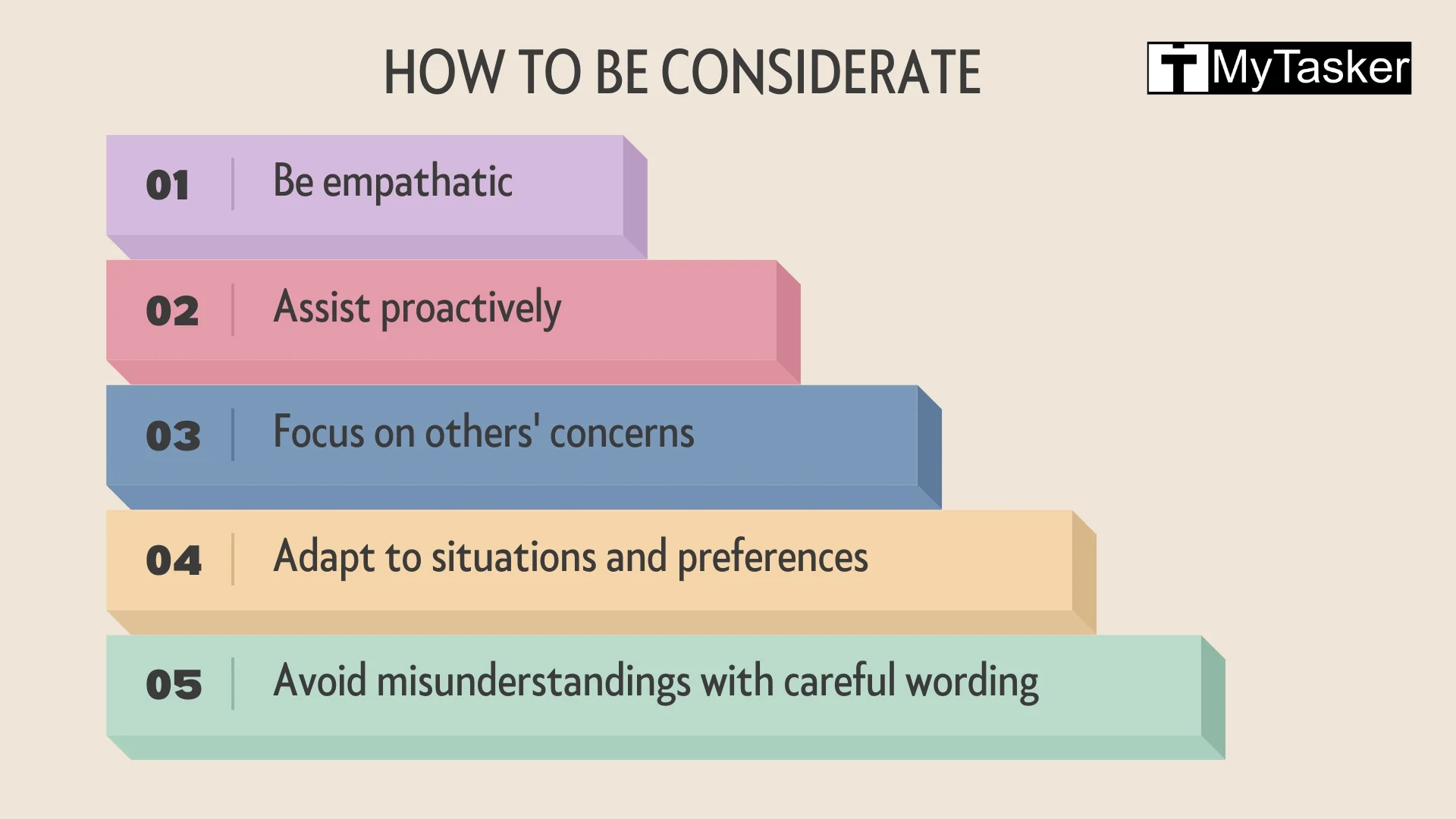
2. Clarity in Communication
Clarity is vital to communication. Avoiding jargon and using plain language ensures your audience gets your message without the fog. Clear communication drives action – whether it’s to subscribe, download, or engage with your content.
Ways to be Clear:
-
One Idea at a Time: Address one concept at a time.
-
Define Short Forms Upfront: Explain acronyms and technical terms early on.
-
Use Active Voice: Make your sentences direct.
-
Stay On Point: Keep anecdotes and details relevant to your message.
Clear messaging helps your audience understand and act.
Good Example: Our primary motive is to increase client satisfaction by 20% in the upcoming quarter through swift response times and customized service.
Why it's good: The statement is direct and brief, pointing out the objective (20% improvement) and the process to achieve it—quick response times and customized service.
Bad Example: "We need to upgrade customer satisfaction very soon.”
Why it's bad: It's unclear. It lacks aim, procedure, and time duration, leading to confusion and different views.

3. Courtesy in Communication
Courteous communication is about respect and politeness. A courteous approach encourages open dialogue and acknowledges that there are other views. Show empathy by considering your audience’s perspective, which is a respectful tone.
To be Courteous:
-
Friendly Tone: Keep it approachable.
-
Don’t Assume: Don’t make assumptions about your audience.
-
Put Recipient First: Focus on what matters to them.
-
Respect Other Views: Acknowledge and appreciate different opinions.
-
Say Thank You: Thank your audience for their time.
This builds connection and understanding.
Good Example: "First, we'll refine the software, followed by team training, and lastly, incorporate an evaluation system."
Why it's good: The steps appear logical, making it easy for the team to comply with and implement them.
Bad Example: "We need to customize the software, but before that, we need to notify the users, and after that, we might think of assessment."
Why it's bad: The arrangement of tasks is indefinite, resulting in prospective complications about the correct chronology of actions.
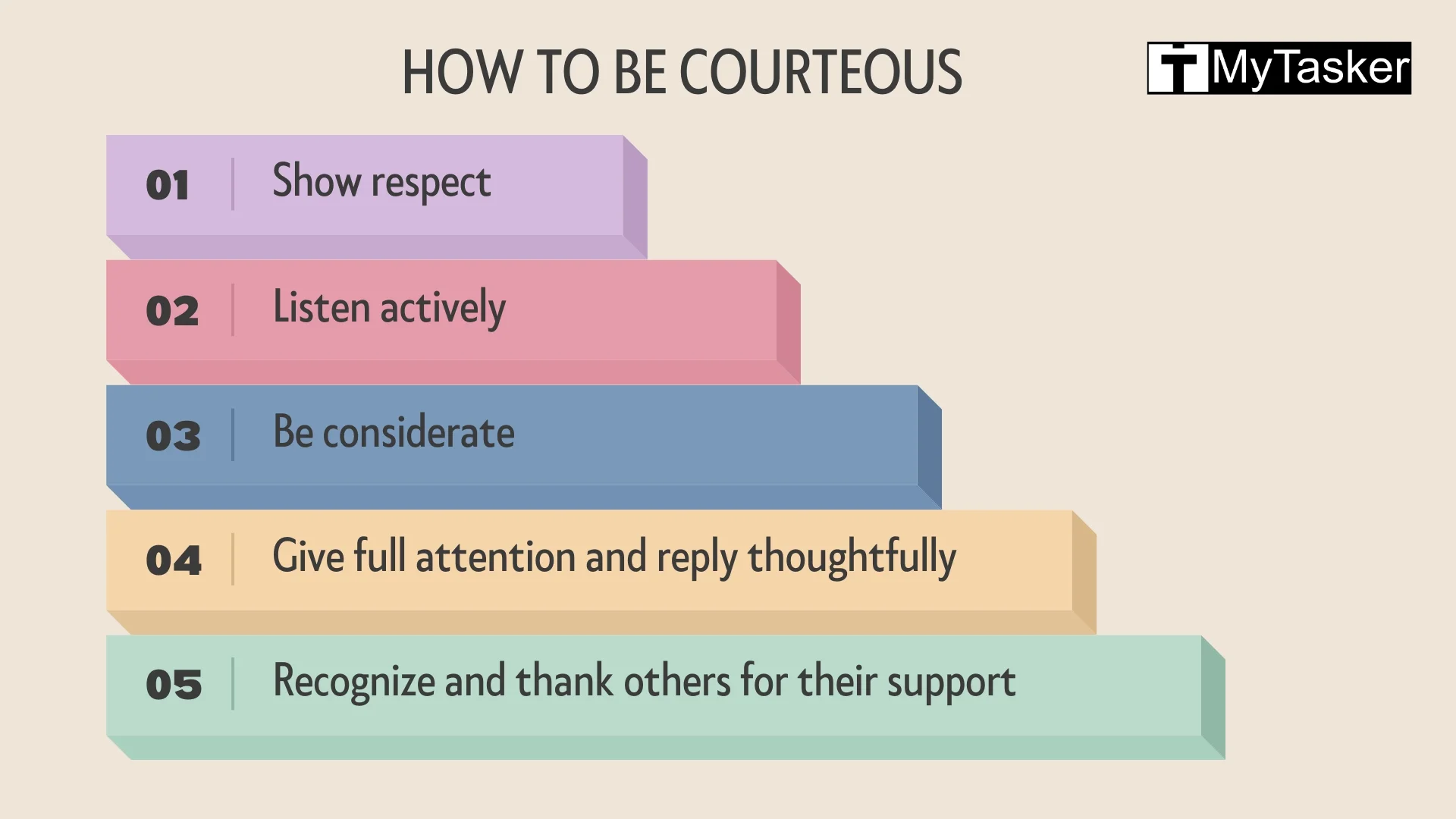
4. Consideration in Communication
Considerate communication is about empathy and awareness of your audience’s needs and feelings. Walking in their shoes lets you craft messages that land and show that you get them.
-
Show Real Interest: Engage with their concerns and interests.
-
Empathize: Acknowledge and address their problems.
-
Use Their Language: Use words that resonate with their background and preferences.
-
Avoid Harmful Words: Don’t use language that hurts their feelings.
-
Focus on Benefits: Explain how your message or solution meets their needs.
A thoughtful message is trusted and encourages engagement.
Good Example: "I have a fair idea that some might find this new process demanding, so we've made further training sessions available, and we're always active to assist with any queries."
Why it's good: The message reflects compassion and assistance, which makes the team feel that they are valuable to us and more sheltered by the changes.
Bad Example: "This being the latest process, everyone is expected to familiarize themselves with it right away without raising any issues."
Why it's bad: It's disparaging and does not approve of significant difficulties, which can lead to annoyance and bitterness among team members.

5. Completeness in Communication
A complete message has all the information, answers the questions, and addresses the concerns so your audience can make an informed decision. Ensuring your communication is thorough prevents confusion or misunderstanding.
To be Complete:
-
Ask the Questions: Address the questions before they are asked.
-
Q&A Sessions: After presentations, ask for feedback to clarify anything to ensure error-free communication.
-
Show the Bigger Picture: Help your audience see how your message relates to them.
Providing all the information builds trust and encourages action.
Good Example: “Finish making the design by Friday, forward the draft to the client on Monday, and convey a response by Wednesday for initiation from next Friday.”
Why it’s good: The message furnishes all essential details, including the target date and steps, revealing to the team exactly what action is desired.
Bad Example: “After the quick completion of design, it needs to be sent to the client so we can initiate.”
Why it’s bad: It needs a definite time limit and instructions, which could create hindrances and misinterpretations.
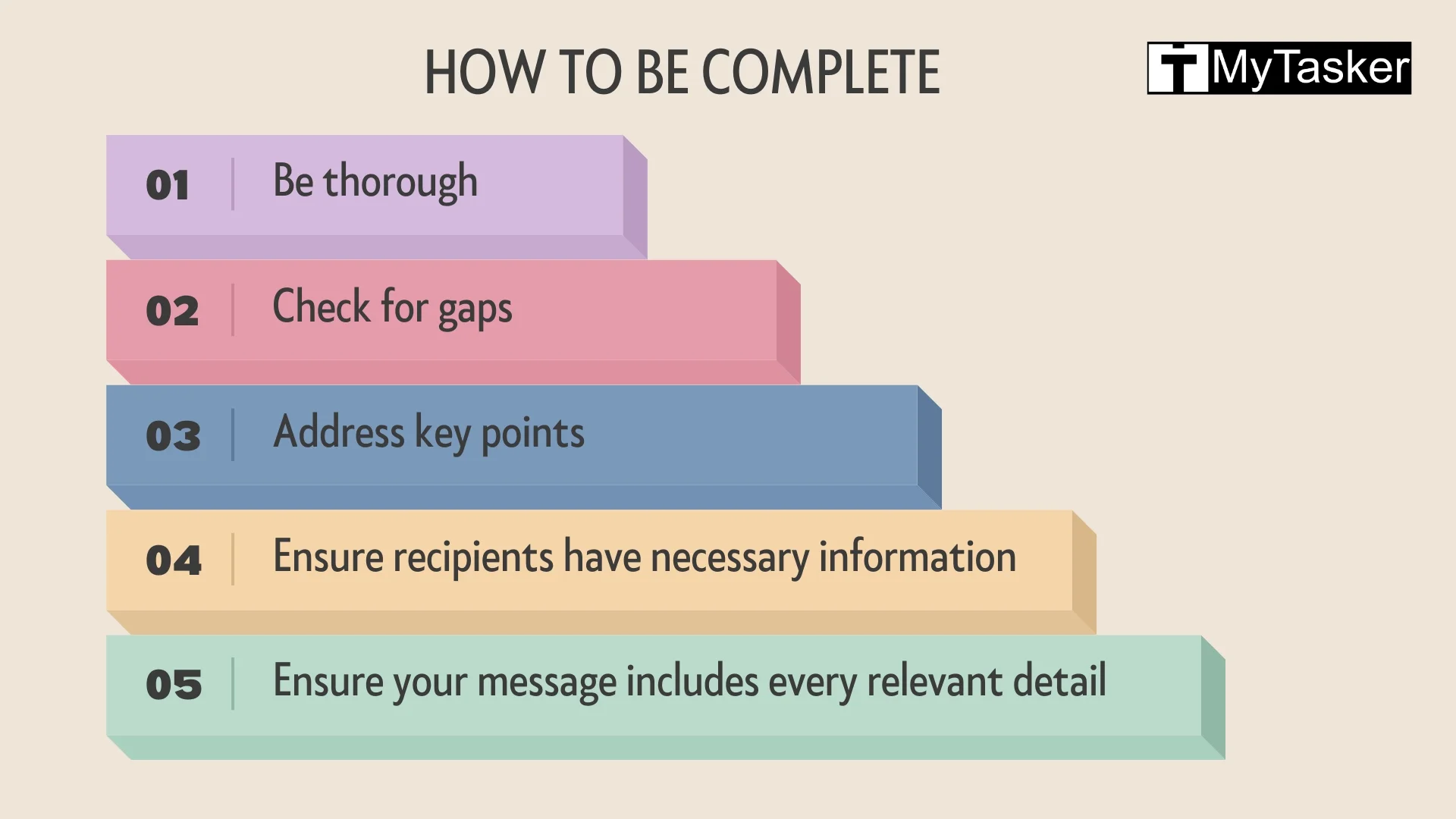
6. Concreteness in Communication
Concrete communication uses specific examples, facts, and data to be credible and relatable. Vague statements disengage your audience, while clear facts and real-life examples resonate and build trust.
For Concrete Communication:
-
Back up Claims with Data: Use relevant stats to support your statements.
-
Share Real-life Stories: Use examples to illustrate your points.
-
Be Clear: Avoid generalities.
Concrete messages add weight to your communication and credibility to your delivery.
Good Example: “Due to our ad campaign and upgraded customer service in the last quarter, our sales got a 20% hike, and there was a 5% improvement in customer retention.”
Why it's good: The above statement offers distinct statistics, making it easy to comprehend the positive effects of the attempts.
Bad Example: “We had a good quarter with more sales and better customer loyalty.”
Why it's bad: It's too obscure and lacks specific details that could help the team understand the results.
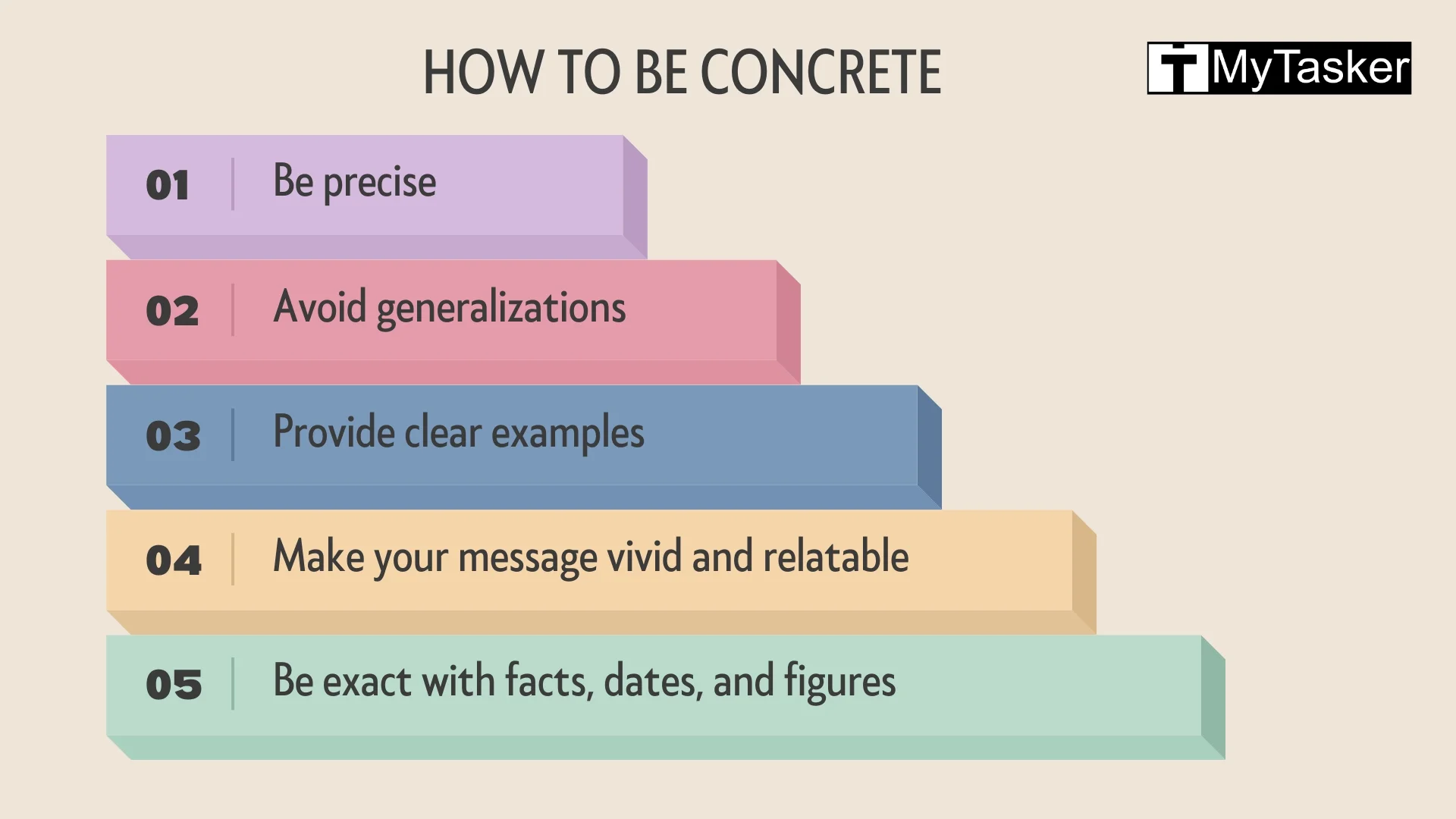
7. Correctness in Communication
Correct communication involves verified information, accurate language, and no errors. Accuracy is key to being taken seriously in both spoken and written communication.
To be Accurate:
-
Verify All Information: Check facts and figures. Provide relevant information.
-
Use the Right Words: Be precise.
-
Check Names and Job Titles: Get all the identifiers right.
-
Get an Expert to Review: If you can, have someone knowledgeable review your message.
-
Use Editing Tools: Use online tools to catch grammatical errors and spelling mistakes.
By being correct, you look professional and build trust so your audience can rely on your message.
Good Example: “There was an increase in our market share by 5% over the last year, making us reach a 30% share.”
Why it’s good: The data is explicit and subject to demonstration, improving trust and ensuring information-centric decisions.
Bad Example: “Our market share got a 50% hike last year,” but the actual percentage is much lower.
Why it’s bad: Furnishing false information hampers reputation and leads to imperfect decision-making.
Following the upgraded examples above, communication can be made more worthwhile and attainable for teams to comprehend and implement.
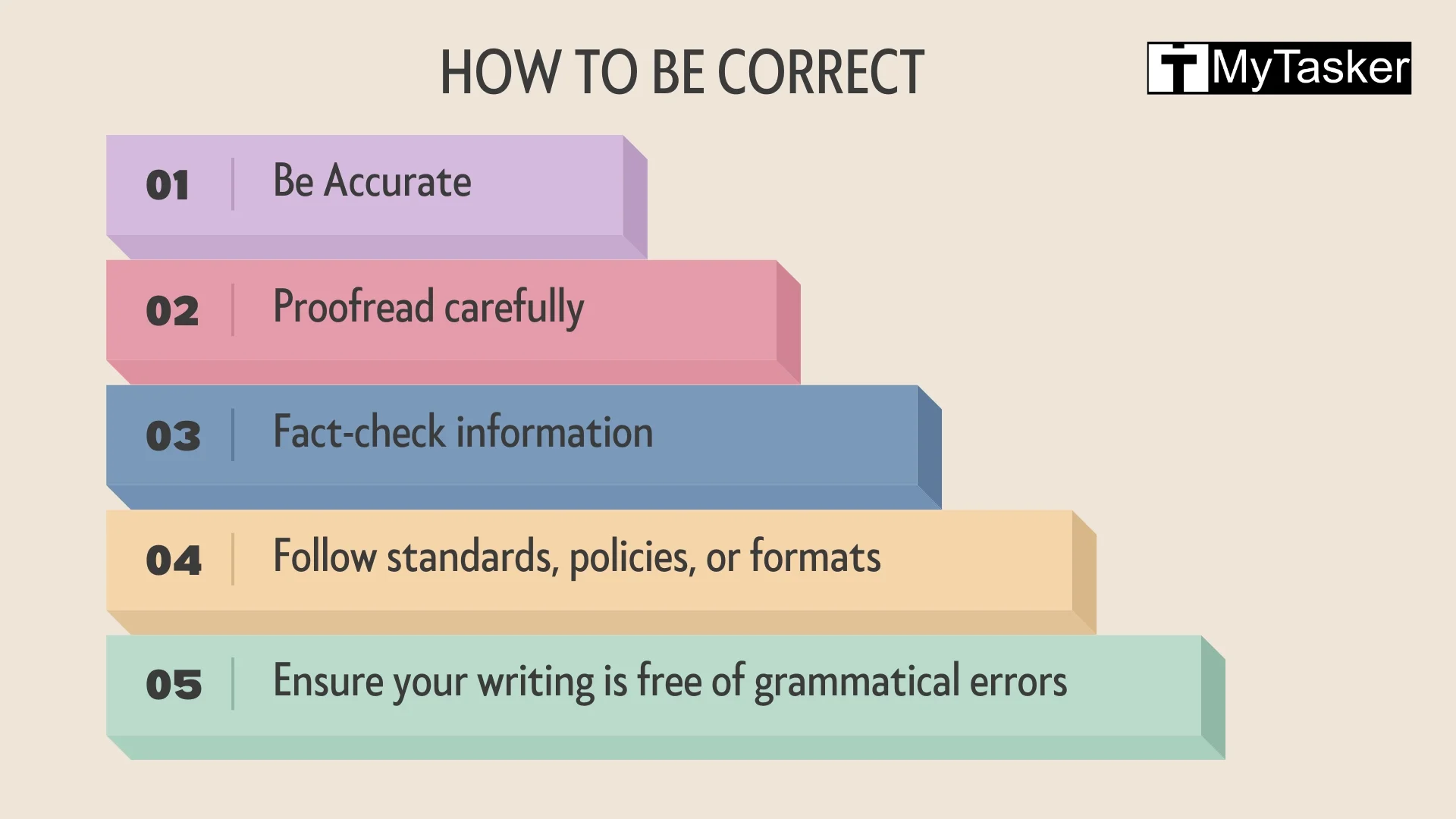
Practical Applications of the 7 Cs
-
Clarity: To avoid confusion, use plain language in emails and reports and get to the point in the first sentence.
-
Conciseness: In presentations, focus on key messages and avoid fluff. Bullet points help to get the point across.
-
Concreteness: Support your arguments with numbers and examples. In sales pitches, include case studies or testimonials to illustrate the point.
-
Correctness: Check your facts and proofread. Use credible sources to add weight.
-
Coherence: Structure your thinking. Use headings and subheadings to guide the reader through your message in written documents.
-
Courtesy: Be polite and show gratitude. Address the recipient by name and acknowledge their view.
-
Completeness: Include all the information in your message. In project updates, summarize progress, challenges, and next steps to keep stakeholders informed and facilitate meetings effectively.
Using these daily will give you more understanding, build better relationships, and achieve your communication goals.
Example of Effective Communication
Clear communication means conveying a message clearly and concisely with consideration to the audience and context. Here’s an example:
Scenario: Team Project Update
Context: The team lead is updating the team during a team meeting.
Team Leader: “Good morning everyone! Thanks for coming in today. I wanted to update you on the XYZ project.
First, we completed the first phase early. That’s thanks to everyone’s efforts and collaboration.”
Clarity: So we’re all on the same page, here are the milestones we’ve hit:
-
Research Phase: 2 weeks early.
-
Prototype Development: Finished last Friday.
-
Testing Phase: Next Monday.
Engagement: What do you think of the prototype? Do you have any feedback? Are there any concerns as we go into testing?
Next Steps: Based on your feedback and preparation for the client presentation, we'll refine the prototype. Please review the prototype materials before our next meeting on Thursday.
Conclusion: Thanks! Your input is super helpful. I look forward to working with you.
Key points to this example:
Clarity: The leader shares updates and milestones with the team.
Engagement: Asks for feedback to encourage participation.
Structure: Follows a clear template
Positive: Acknowledging the contribution of the team to set a positive note.
These 7 Cs are the cornerstones of our weekly huddles and inter-departmental meetings. They help us work in sync with each other and have fruitful discussions with our clients. We follow the principles of the 7 Cs aptly in communication, including writing articles or video scripts.
Why is communicating important?
Communication is the foundation of our progress and our culture and society. It allows knowledge, wisdom, and traditions to be passed down from one generation to another.
Building relationships, sharing information, or solving problems can’t be done without effective communication. It shapes our personality; we share our views, express ourselves, and connect with others through words in both professional and personal life.
Without effective communication, we get misunderstandings, poor teamwork, and inaction. Without it we can’t learn, adapt and grow. Communication helps us connect with each other.
What Communication Skills to Put on a Resume?
Be mindful of what you put in your resume. Don’t clutter it. The skills should be relevant to the job listing or requirement. For example, if you’re applying for a web developer job, you should list all your digital marketing and bookkeeping certifications in your resume.
Communication skills are not just about speaking skills. It includes:
Writing skills — reports, minutes, social media content, newsletters, or blog posts.
Verbal communication — Efficiency in meetings, presentations, and discussions. You can even include your non-verbal communication skills, like understanding body language, eye contact, and non-verbal cues to initiate or enhance interactions.
Showcase your adaptability, conflict resolution (share some examples), and emotional intelligence (interpersonal skills and empathy).
How do you improve your corporate communication skills?
To improve your corporate communication skills:
Know Your Audience: Craft your message according to your audience’s needs and interests.
Be Clear and Direct: Keep it simple and easy to understand. Don’t use jargon when talking to non-technical or different domain audiences.
Listen Actively: Mute the chatter in your head and eliminate the thought you know everything or the urge to respond. Just keep your ears on the speaker.
Show Empathy: Understand and appreciate other views.
Match Tone and Body Language: Your tone should match your message. Be empathetic. Never stop learning and improving your communication skills.
Be clear in writing and verbal communication. Remove the clutter and unnecessary words or phrases.
How do you succeed in corporate communication?
Follow these points to succeed in corporate communication:
Know your audience and craft your message according to their needs.
Focus on clarity over everything.
Choose the right channel, whether email, meetings or social media.
Be reliable, open, and accessible. Set SMART (Specific, Measurable, Achievable, Relevant, Time-bound) goals to track communication progress and adjust as needed.
Accept and manage emotions according to culture.
Get feedback from your peers, and never stop improving your communication skills.
Who created the 7 Cs?
The 7 Cs have been interpreted differently across education and communication fields. Bernie Trilling and Charles Fadel came up with the 4Cs—critical thinking, collaboration, communication, and creativity—in 21st Century Skills: Learning for Life in Our Times and then added cross-cultural understanding, computer and ICT literacy, and career self-reliance.
In the context of communication, Scott M. Cutlip and Allen H. Center introduced the 7 Cs in Effective Public Relations (1952):
-
Clear
-
Concise
-
Concrete
-
Complete
-
Correct
-
Coherent
-
Courteous
These principles apply to all fields of communication, keep messages focused and meaningful, and reduce misinterpretation. The 7 Cs is the key to good communication and understanding.
How can I apply the 7 Cs in my daily speaking or writing?
-
Clarity: Focus on one idea and use simple language.
-
Conciseness: Be brief; don’t use unnecessary words.
-
Concreteness: Use examples or facts.
-
Coherence: Organise your ideas.
-
Courtesy: Be polite.
-
Completeness: Give all the facts.
Use these in emails, meetings, and conversations for better communication.
How do I remember the 7 Cs?
To remember the 7 Cs—clarity, conciseness, concreteness, correctness, coherence, courtesy and completeness—make it a daily habit. Practice them every time you write an email, talk to someone, or give a presentation.
Start with clarity and conciseness, and then add the rest. The more you use them, the more it will become second nature and the better your communication will be.
You can apply these tips to improve your communication and overall interaction.
How to Give Feedback
Start by stating the purpose of your feedback. Briefly explain what you want to talk about and why it matters. If you’re starting the conversation, let the person know you’d like to give some feedback and be specific about what you want to discuss—this avoids confusion and creates a safe space to chat.
If the other person has asked for feedback, your statement should confirm and focus on their needs or questions.
Feedback should always be constructive, clear and goal focused. Whether you’re asking for change or reinforcing good work, the right words build trust and open up conversation.
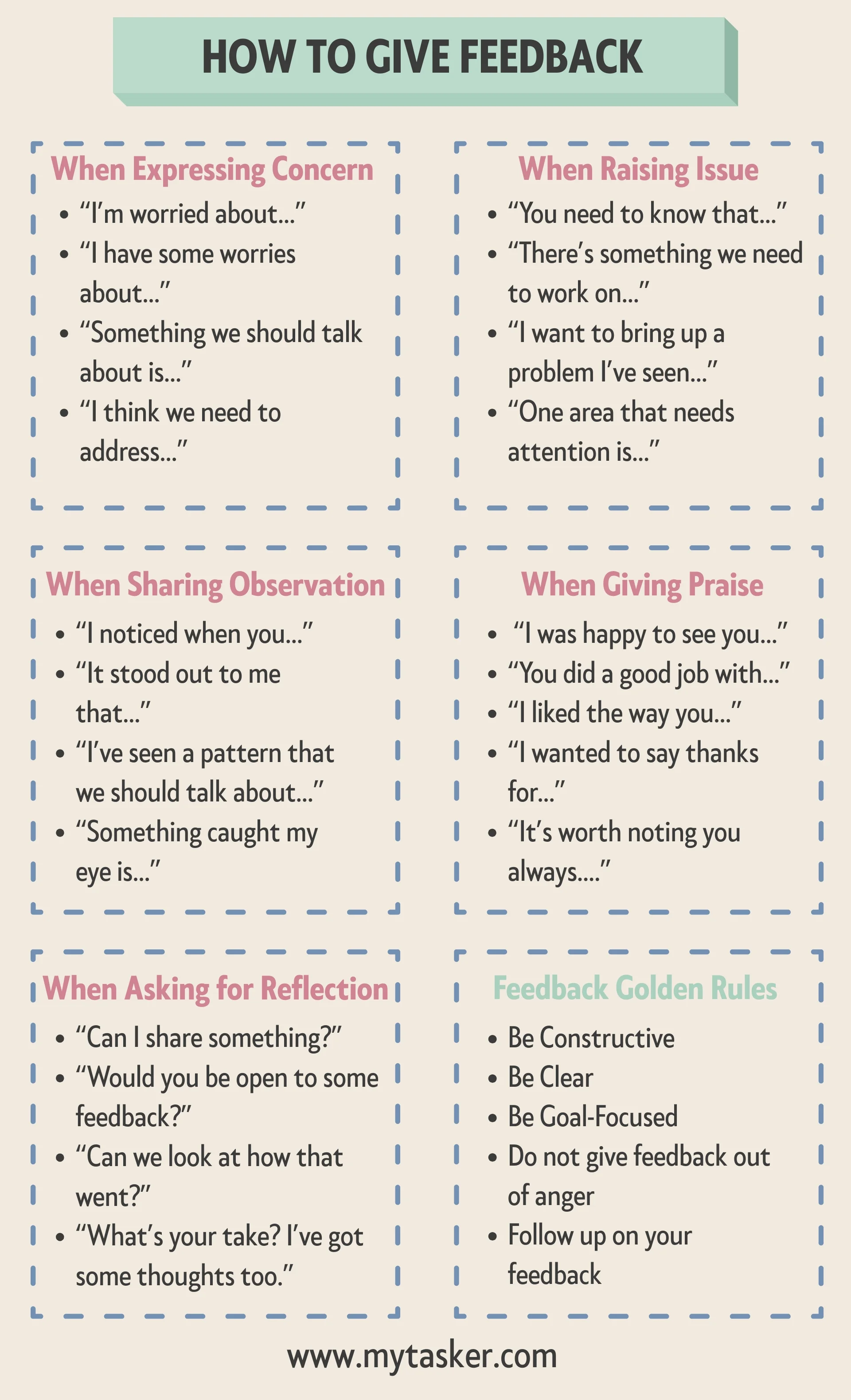
Summary
Whatever your industry, you need to communicate professionally with others to close deals or work on projects. The 7 Cs of communication help you boost productivity and engagement by getting your message across to your audience quickly.
Need help in writing effective emails, blog posts, articles, or social media posts? Contact the Writing experts at MyTasker. They can help you convey your point to your audience in a professional and conversational tone.
Clear, concise, complete, considerate, correct, courteous, and concrete content can take your business to the next level.



